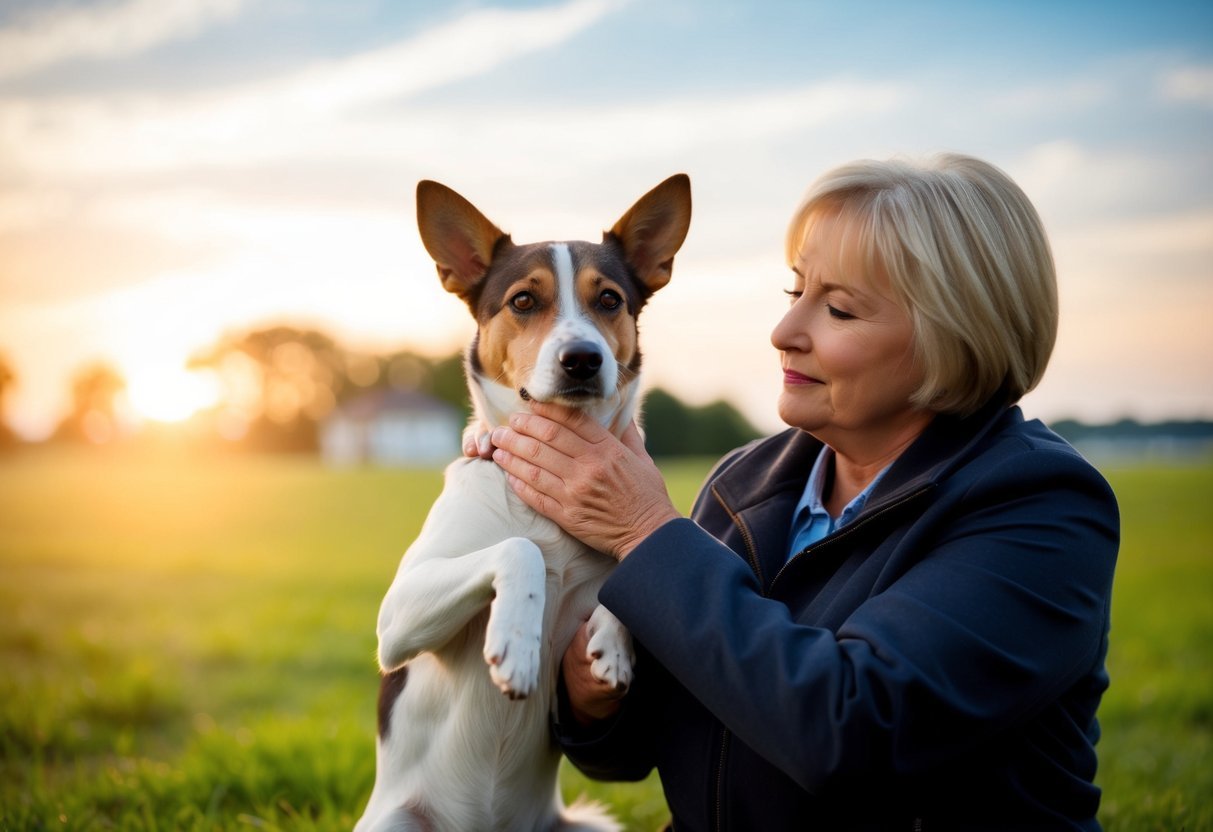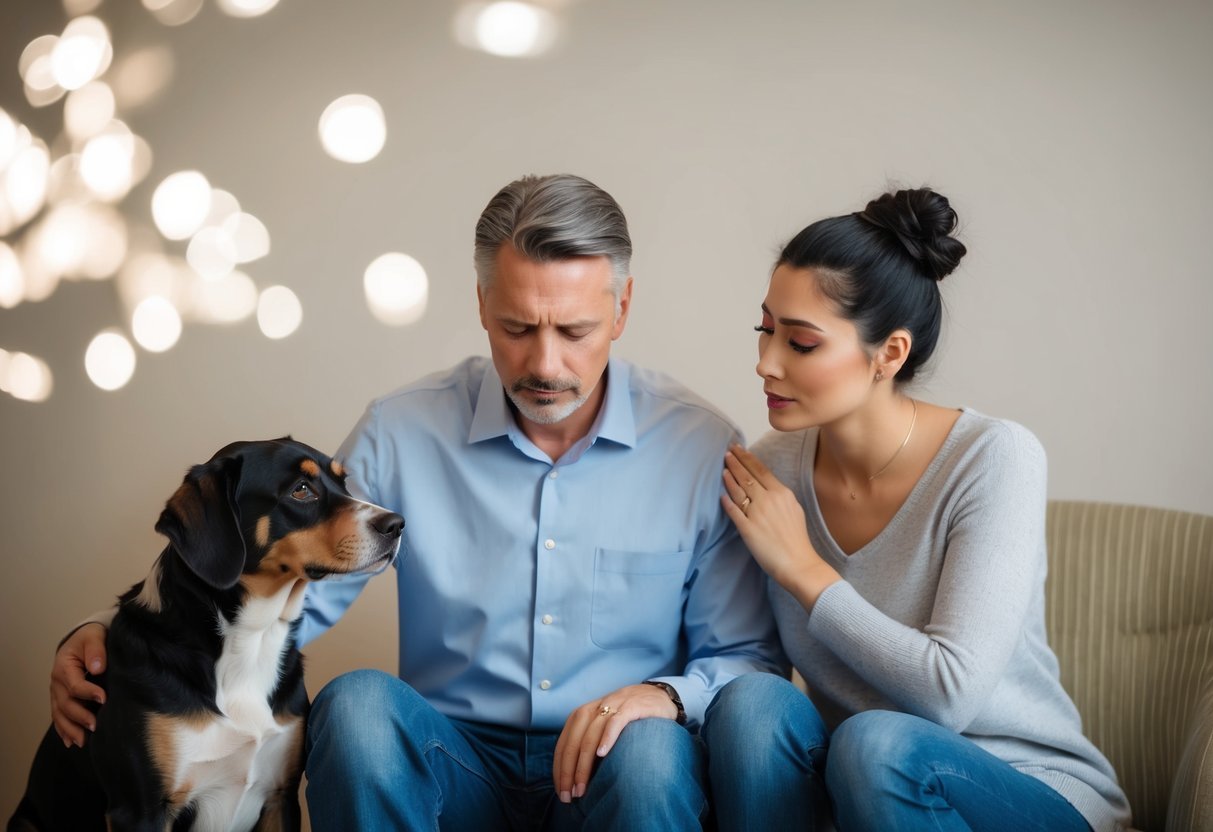When it comes to our beloved dogs, making tough decisions can be part of being a responsible pet owner.
Dog euthanasia is one of the hardest topics to face, but understanding the truth behind it can help you navigate this heart-wrenching process.
Every owner should know the emotional weight and the compassionate reasons behind considering euthanasia for their furry family members.
As much as we love our pets, there comes a time when their well-being must be prioritized over our feelings.
It’s a situation filled with heartbreak and confusion, but understanding what to expect can offer some peace of mind.
Being informed about the realities of dog euthanasia can guide you in making the best choices for your pet’s end of life.
1) The Final Goodbye: Holding Their Paw

When the time comes for your dog to say goodbye, holding their paw can bring comfort.
Your touch reassures them that they are not alone.
This final moment is special and can strengthen the bond you share.
Many owners find peace in being present as their dog takes its last breath.
Your presence can help ease their fears.
You can remind them of the love you’ve shared throughout their life.
You might want to create a calming atmosphere.
Soft words and gentle strokes can make a difference.
This environment can help both you and your dog feel connected.
It’s natural to feel deep sadness during this time.
Knowing that you are there for your dog can be a source of comfort.
The moments spent together can become cherished memories that last a lifetime.
Holding their paw during this goodbye can offer solace to both you and your loyal friend.
It’s a simple but powerful way to show them love in their final moments.
The Guilt That Haunts Owners

Deciding to euthanize your dog can weigh heavily on your heart.
Many owners feel deep guilt, questioning if they did the right thing.
You might wonder if you should have tried harder to help your pet.
This guilt can come from second-guessing your choices.
Did you wait too long? Was there another option you missed? These questions haunt many owners after their pet is gone.
It’s common to feel ashamed or blame yourself for the decision.
You might think, “I should have known better,” or “Could I have done more?” These feelings are part of the grieving process.
Talking with others who have faced similar situations can help.
Sharing your feelings with friends, family, or support groups can bring some comfort.
Knowing you’re not alone can lighten the burden.
You loved your dog and made the best choice you could at that moment.
That’s what counts.
Try to remind yourself that you acted out of love, even in the hardest times.
3) Understanding ‘Rainbow Bridge’

The term “Rainbow Bridge” refers to a comforting idea many pet owners cherish.
It describes a beautiful place where pets go after they pass away.
The concept provides peace by suggesting that your pet is not suffering anymore.
Instead, they play happily, waiting for you to reunite one day.
Many people find comfort in thinking about their pets being free of pain and surrounded by other animals.
It helps in coping with the grief after losing a beloved companion.
You can create your own memories of the Rainbow Bridge.
This may include fond stories or special rituals that honor your pet.
Sharing these feelings with friends or family can also lighten the burden of grief.
Remember, you’re not alone in your experience.
Many others understand the heartache of losing a furry friend.
Embracing the idea of the Rainbow Bridge can make the loss feel a little less heavy.
It offers a sense of hope that your bond with your pet remains strong, even in their absence.
4) To Be There or Not: A Tough Choice

Deciding whether to be present during your dog’s euthanasia can be really hard.
It’s natural to feel torn about this choice.
Some owners want to be there for comfort.
They feel it’s important to say goodbye and provide support in those final moments.
It can be heartwarming to know you offered your pet love at the end.
On the other hand, some owners find it too difficult to witness.
They may struggle with the pain and sadness of the situation.
It’s okay to step away if you feel that’s best for you and your dog.
Veterinary staff often understand these feelings.
They can provide care and support, ensuring your pet is treated gently.
Many pets find comfort in familiar voices and touches, but every situation is unique.
Ultimately, this decision comes down to what feels right for you.
Take time to think about it and know that either choice is valid.
Understanding Dog Euthanasia

Euthanasia is a sensitive topic for dog owners.
It’s important to understand what it involves and to separate myths from facts to make an informed decision when facing this heart-wrenching moment.
What Euthanasia Entails
Euthanasia for dogs usually involves a veterinarian administering a sedative first, followed by a drug that gently stops the heart.
This process is quick and designed to be as peaceful as possible for your pet.
While watching your dog go through this is painful, the procedure itself is meant to minimize suffering.
You have the choice to be present during this time, which many owners find comforting.
Each step should be discussed with your veterinarian to ensure you fully understand what will happen.
Common Myths and Facts
There are many myths about dog euthanasia that can cause confusion.
For instance, some people believe euthanasia is a painful process, but it’s not.
In fact, it allows your dog to pass peacefully without distress.
Another myth is that only old or sick dogs should be euthanized.
This is not true.
Quality of life matters, and if your dog suffers from a condition that affects their well-being, it might be time to consider this option.
Discuss any concerns with your vet to feel more informed.
Caring for your dog means making tough decisions, and understanding facts about euthanasia can bring some peace in a challenging time.
Emotional Impact on Owners

Facing the decision of euthanizing your dog can lead to intense emotional pain.
As a pet owner, it’s essential to acknowledge your feelings of grief and understand that seeking support can be very helpful during this difficult time.
Coping with Grief
Feeling a surge of emotions like sadness, guilt, and even anger is normal after you say goodbye to your dog.
The bond between you and your pet is strong, and their absence can leave a significant void in your life.
Here are some ways to cope:
- Allow Yourself to Feel: Don’t suppress your emotions. Let yourself cry or express frustration.
- Create a Memory: Consider holding a small memorial or creating a scrapbook of your favorite moments together.
- Routine is Key: Establish a new routine to help fill the emptiness. Engage in activities that bring you joy.
Grieving is a personal journey, and it may take time to heal.
Be patient with yourself.
Seeking Support Groups
Finding a supportive community can make a huge difference in your healing process.
Connecting with others who have gone through similar experiences can provide comfort.
Look for:
- Local Pet Loss Support Groups: Many communities have groups where you can share feelings and memories.
- Online Forums: Websites and social media platforms offer spaces for pet owners to discuss their pain and support each other.
- Counseling Services: Consider talking to a therapist who understands pet loss. They can offer coping strategies tailored to your situation.
It’s okay to reach out.
Having supportive people around you can ease the feelings of isolation during this tough time.
Choosing the Right Time
Deciding when to say goodbye to your dog is difficult.
It helps to have guidance from your vet and to recognize signs that may indicate your pet is suffering.
Consulting Your Veterinarian
Your veterinarian is a key resource when making decisions about euthanasia.
They can assess your dog’s health and help you understand their medical conditions.
Ask questions about your pet’s quality of life and prognosis.
Your vet can provide specific details about your dog’s illness, treatments, and what to expect going forward.
Don’t hesitate to mention any concerns you have.
Vets can offer a compassionate perspective and may suggest options you didn’t consider.
They can help you find peace with whatever decision you make.
Recognizing Signs of Suffering
It’s essential to be aware of the signs your dog is suffering.
Changes in behavior can indicate discomfort or pain.
Look for these common signs:
- Decreased appetite or reluctance to eat
- Difficulty getting up or moving around
- Excessive panting or whining
- Changes in bathroom habits
If you notice these signs, take a moment to evaluate your dog’s quality of life.
If they seem to be in pain or unable to enjoy their favorite activities, it may be time to consider your options.
Listening to your dog and being in tune with their needs can guide you during this tough time.
Frequently Asked Questions
When facing the difficult decision of euthanasia for your dog, you may have many questions.
Understanding the process and what to expect can help ease your mind during this tough time.
Should I be there with my dog during euthanasia?
Being with your dog during the procedure can provide comfort to both you and your pet.
Many owners choose to stay by their dog’s side, holding their paw and speaking softly.
Your presence can help your dog feel secure during this final moment.
What are some comforting words I can say when my dog is being put down?
Expressing love and reassurance can be very comforting.
You might say phrases like “I love you” or “You’ve been a wonderful companion.” Simple, positive words can help create a peaceful atmosphere as your dog prepares to rest.
How will I know it’s time to euthanize my dog?
Signs that it may be time for euthanasia include a decline in quality of life, difficulty breathing, or persistent pain that cannot be managed.
Consult with your vet to evaluate these signs and discuss the best option for your dog’s well-being.
What should I expect during the euthanasia process?
Euthanasia typically involves an injection that will first make your dog unconscious and then stop the heart.
Your veterinarian will guide you through the process, ensuring it is as peaceful and gentle as possible for your dog.
How can I cope with the loss of my pet after euthanasia?
Grieving the loss of your dog is a natural response.
Allow yourself to feel this sadness.
Talking to friends or family, seeking support groups, or remembering the joyful times can help you heal over time.
Are there any signs that my dog understands what’s happening during euthanasia?
Dogs may show signs of awareness, such as looking at you or being calm.
While they might not understand fully, your dog’s behavior can reflect their feelings.
Observing their reactions can be a comforting reminder of the bond you shared.

